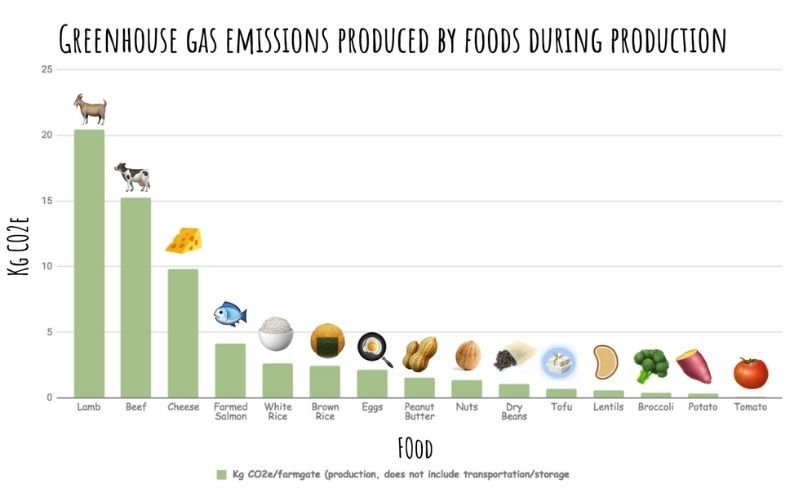15 Ways to Reduce Your Carbon Footprint
This here is David Latimer and his sealed bottle garden which hasn’t required any attention to thrive in 53 years.

The plants are entirely self-sufficient and survive by recycling everything they need. We’ve all learned this in grade school biology – plants take in carbon dioxide during the day and release oxygen at night. The perfect example of the carbon cycle in balance.
Climate change is the biggest emergency to face the global community today and two words keep coming up - carbon footprint.
But carbon dioxide isn’t all bad, and is actually a very essential part of life. As with all things in life, too much or too little is bad news. But the good news, carbon neutrality is very much possible. How you ask? Here are 15 ways to direct your business towards carbon neutrality.
Tip #1: Use renewable energy

Renewable energy is clean and inexhaustible. The most accessible of these to implement in an office would probably be solar energy. If you really look into it, we are all solar powered – plants photosynthesize, animals eat plants, humans eat animals and plants. While the upfront costs might be higher, renewable energy always pays for itself in time. If you don’t have the roof space for it, many countries now have electricity companies who work with solar energy. Ask Google for more information.
Tip #2: Energy audit
A professional will probably be the best way to go but there are many things you can do yourself to check if your office space is optimised.
Here’s a simple checklist you can use:

- Locate air leaks: These could reduce the efficiency of heating/ cooling
- Check insulation: Insulation standards and requirements change over time
- Inspect heating/cooling equipment: Equipment gets less effective as it ages and as filters clog up
- Lighting: Are you using energy-saving bulbs? Also consider controller such as sensors and timers
- Appliances: Switch off when not in use to prevent phantom power loss
Tip #3: Fly less (when air travel resumes, of course)
When I look at my carbon footprint, flying is the vast majority of it as it will be for anyone who travels internationally. But was your cross-continental business trip completely necessary?
As flying now constitutes 2% of global carbon emissions and is expected to grow to 16% by 2050, there is a growing no-flight movement. and even a new Swedish term flygskam, meaning flight shame.
With the invention of video conferencing, let’s all try to reduce non-necessary flights. If you really do have to, remember economy class is less polluting than business.
Tip #4: Cycle to work or to your local grocery store

Besides being a great workout and good for health, cycling to work can reduce up to 6% of your carbon footprint. Not burning fossil fuel to run a car means less exhaust, plus a bicycle takes up a lot less material and hence energy to produce than a car. And if you're not a fan of pedalling, consider an electric bike instead.
Bonus if you get a second-hand bike!
Tip #5: Carpool
If it’s too far to cycle, consider setting up a carpool with your colleagues or even strangers new friends who work in your vicinity. There are many apps out there that connect you with a group of like-minded individuals.
Carpooling means there are fewer vehicles on the road, less congestion, faster journeys, and less pollution.
Tip #6: Work from home
During the difficult period as the world rallies through COVID-19, many companies responded with work from home arrangements. It was a testbed to determine if this was a feasible solution and the answer is – yes.
Many countries have encouraged flexible work arrangements even before the pandemic. And when we all went into #socialdistancing, we quickly found that many roles can indeed be done remotely. It eases work-life balances and working from home just one day a week can increase your office’s energy efficiency by 20%.
Tip #7: Think about your buying habits
How old is the device you’re reading this on? Why did you buy it? Was the previous device broken or did you declare it obsolete? If you really think deep into your buying habits and the forces that drive your consumption, you’ll be surprised at how much you don’t actually need.
Tip #8: Question the information
Beautiful table – where is the wood from? Delicious mushrooms – where was it grown? Green energy – is that really sustainable or is it from offsets? Avocadoes - You get the drift.
Tip #9: Start an office garden

They brighten up the office and remember grade school biology class? Plants take in carbon dioxide and release oxygen when they respire! This improves air quality, lowers emission rates, and beautifies the space. You might even grow herbs for colleagues to take home fresh.
If you're now working from home, there's no better time to get more plants to liven up your home office!
Tip #10: Less meat
Do you have meals catered in the office or go out together as a team to eat? You may not realize but food consumption is one of the biggest contributors to our carbon footprint.
There are many frightening statistics out there about the hidden cost of eating meat. It takes 27 times more energy to produce 1 calorie worth of beef protein than it takes to produce 1 calorie of soy protein. It takes 20,000 liters of water to produce beef as compared to 100 liters for an equivalent amount of tomatoes, and 23 times more land than it would require for equivalent cabbages (Schwarcz, 2017).
And these are just the more visible costs of meat. Also consider that every square meter of land currently used for farming could instead be used for the restoration of ecosystems and wildlife, avoiding a mass species extinction.
A famous paper in Science found that switching to a plant-based diet could result in 76% of farming land being released back to nature. To clear land needed to raise animals and feed them often means deforestation (Schwarcz, The Environmental Cost of Meat, n.d.).

But if you’re a meat-lover, completely switching to a plant-based diet wouldn’t be ideal. So instead, consider alternating between a meat-based meal and a plant-based meal. Who knows, you may eventually discover delicious plant-based recipes that you’ve never thought possible!
Tip #11: Reduce food waste

A quick Google of food waste statistics is quite shocking. In Singapore, food wastage has increased by 30% over the last 10 years and in Australia, food waste costs the economy $20billion each year.
These figures and patterns are unfortunately not only restricted to industrialized countries and accounts for 4.4 gigatonnes of greenhouse gas emissions yearly.
Most of this wastage is due to cosmetic reasons – food being ugly, bruised, too small, too large, the wrong color, but still very much edible. Let’s learn to look past what we’ve been taught about the ‘right’ looking food and signal to our food producers that we will eat what is edible, regardless of appearance.
Eat ugly and waste less.
Tip #12: Remove single-use

Single-use and disposable should be the new bad words of this decade. While there is some justified use of single-use material such as in the medical field, here we are talking about convenience. Convenience can no longer be an excuse for unnecessarily polluting our oceans, piling up landfills, and using precious raw material. Plastic production is extremely harmful to the environment, it starts with fracking for petroleum, all the way until it is buried as waste.
According to the Center for International Environmental Law, ‘plastic is among the most significant and rapidly growing sources of industrial greenhouse gas emissions’.
Set up an office informal rule to bring your own containers to takeaway food, your own cup to takeaway drinks. That way, you can hold each other accountable!
Tip #13: Upcycle
If after reducing and removing you still find that you have some waste left, then think of recycling. Or better yet, upcycle! This means creatively reusing waste materials to create something with a higher value than the original item. One of the most popular ones which you’ve probably never realized was upcycled, is a vinyl record bowl.
Another really easy one which I do at home is using empty plastic jugs as a pot to re-grow herbs from their stems. The possibilities are endless, and it keeps waste out of the landfill.
Tip #14: Educate and inspire your team

Now that you’ve read this article, you probably have a few ideas in mind of how you can reduce the carbon footprint at the office. Now share that with someone, and they can implement changes to their lives as well.
Consider setting up mini-goals within the team so that you can all achieve a better carbon footprint together and learn together. It can make employees feel like they’re part of a bigger picture – saving the world!
Tip #15: Offset your ‘hidden’ carbon emission
Ultimately, no matter how much we try, we undoubtedly will put out more carbon than we want to, whether it’s the invisible carbon footprint of our consumption, necessary travel, or anything in between.
But good news – there are many organizations out there who can help you reduce your carbon footprint through carbon offsets.
Here's how you can offset your carbon emissions with B1G1.
